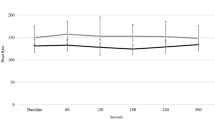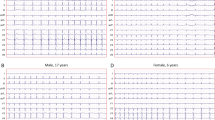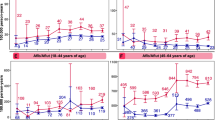Abstract
Summary: In this study, trigeminal airstream stimulation is used on a group of normal, sleeping infants to screen for reflex bradycardia. Infants were tested at 1-3 days and at 4, 8, 12, and 16 weeks of age. The usual heart rate response was acceleration above the prestimulus level. The amount of heart rate change was seen to depend on prestimulus rate and, to a lesser extent, postconceptional age. Multiple regression analysis of the data provided estimates of expected responses, given postconceptional age and prestimulus heart rate. From these, ranges were established for classification of normal or abnormal responses. Six deviant data points over 2 SDs from expected values were identified. Two of these represented heart rate increases and four were heart rate decreases. One deviant heart rate decrease was over 3 SDs from the mean. Although the deviant increases were thought to represent exaggerated startles, the more severe heart rate decreases were believed to be a reflex resembling the diving reflex.
Speculation: Trigeminal airstream stimulation in infants is a method of screening for the existence of a reflex bradycardia which resembles that of a diving reflex. Such a method may be used to identify infants with abnormal response patterns who could, in theory, be at risk for sudden infant death syndrome (SIDS). Use of this method in large groups of normal infants, infants with specific pathologic states, and in both sleep stages would yield valuable information about such reflex bradycardia.
Similar content being viewed by others
Log in or create a free account to read this content
Gain free access to this article, as well as selected content from this journal and more on nature.com
or
Author information
Authors and Affiliations
Rights and permissions
About this article
Cite this article
Allen, L., Howard, G., Smith, J. et al. Infant Heart Rate Response to Trigeminal Airstream Stimulation: Determination of Normal and Deviant Values. Pediatr Res 13, 184–187 (1979). https://doi.org/10.1203/00006450-197903000-00011
Issue date:
DOI: https://doi.org/10.1203/00006450-197903000-00011



